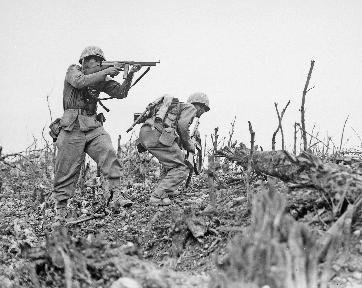Quiz Answer Key and Fun Facts
1. What was the code name for the naval phase of the invasion?
2. Which of these British admirals commanded the invasion fleet?
3. Approximately how many vessels, including landing craft carried on board other ships, made up the invasion fleet?
4. According to the U.S. Navy, a "ship" was over a certain number of feet, and a "craft" was under that number of feet. What was that magic number?
5. On the afternoon of June 5th, the allies suffered their first losses of the invasion when a minesweeper struck a mine and sunk with the loss of six men. What was the name of the ship?
6. The invasion fleet sailed from a number of ports in England and passed through an assembly area southeast of the Isle of Wight. What was the nickname of this area?
7. There were three American battleships in the invasion fleet. Two of the American battleships were the USS Arkansas and the USS Texas. What was the name of the third U.S. battleship?
8. There were also three British battleships. Which of the following was not one of the British battleships in the invasion fleet?
9. Collectively, the six battleships were called what by the navy men?
10. Three German E-boats attacked the fleet and sunk one allied destroyer. What was the name of that destroyer?
11. One other allied destroyer was sunk by mines off of Utah Beach on D-Day. What was the name of that unfortunate ship?
12. Off either end of the British-Canadian invasion beaches two vessels, the X20 and the X23, were utilized as navigational markers to define the limits of the British assault zones. What type of vessels were they?
13. Admiral A.G. Kirk, commander of the American task force, and Lt. Gen. Omar N. Bradley, the American ground commander, occupied what cruiser as their flagship?
14. The smell of what substance permeated the transports, the landing ships and the landing craft?
15. The naval bombardment of the invasion beaches was planned to last how long?
Source: Author
Ben41
This quiz was reviewed by FunTrivia editor
bloomsby before going online.
Any errors found in FunTrivia content are routinely corrected through our feedback system.
